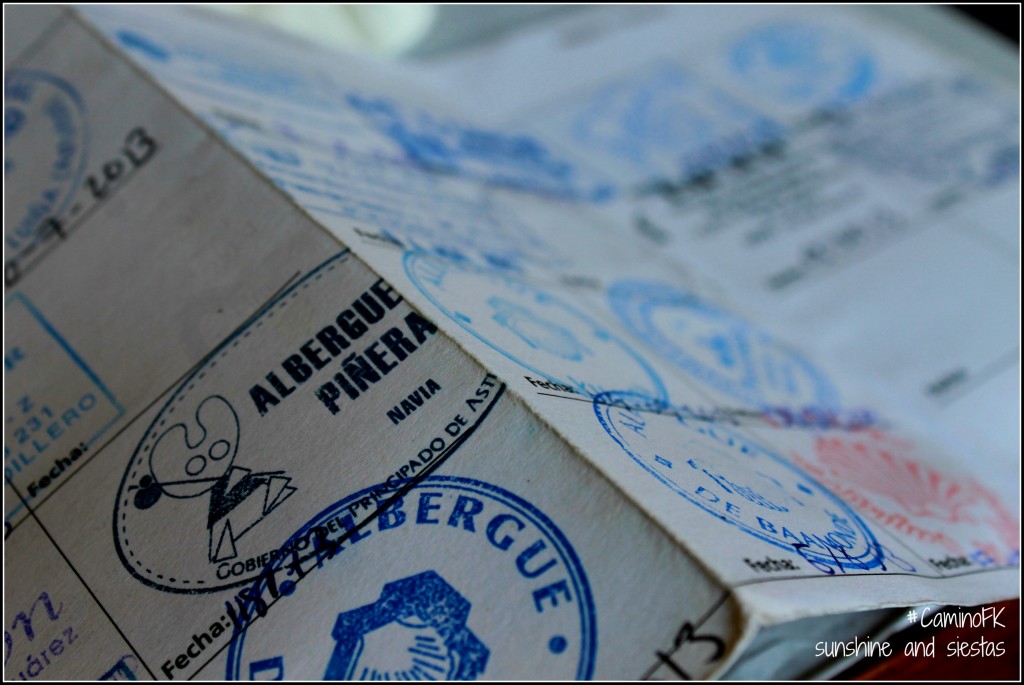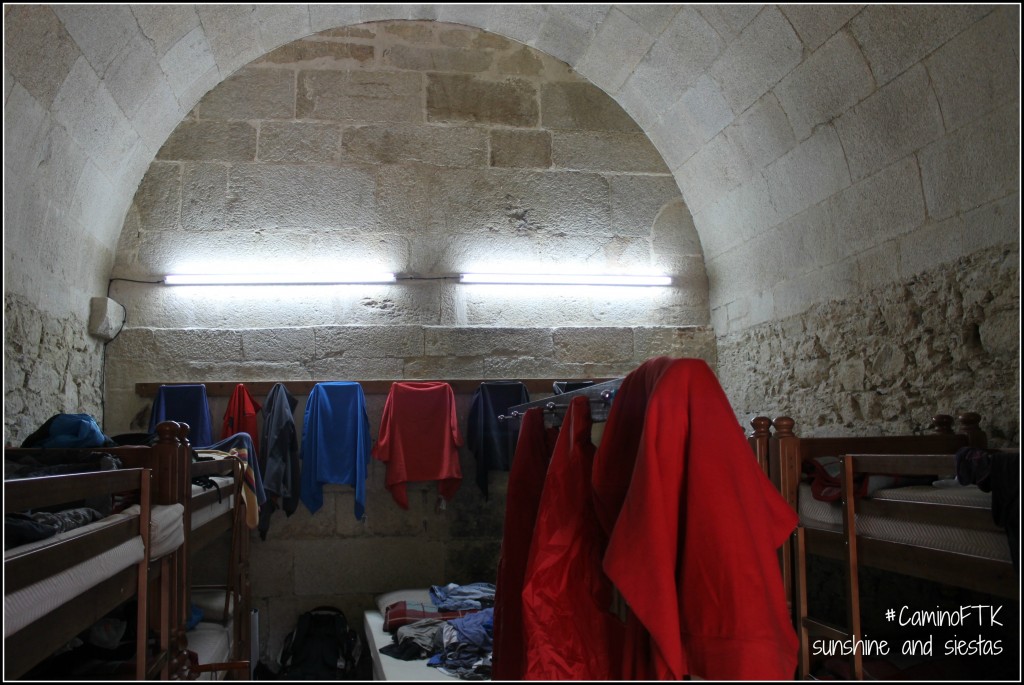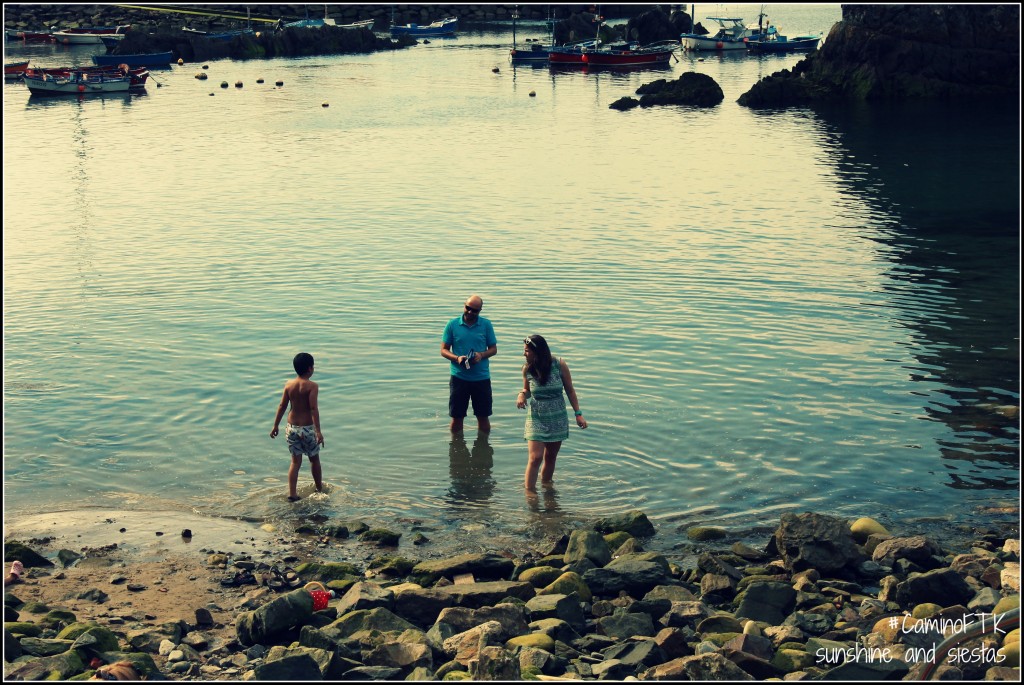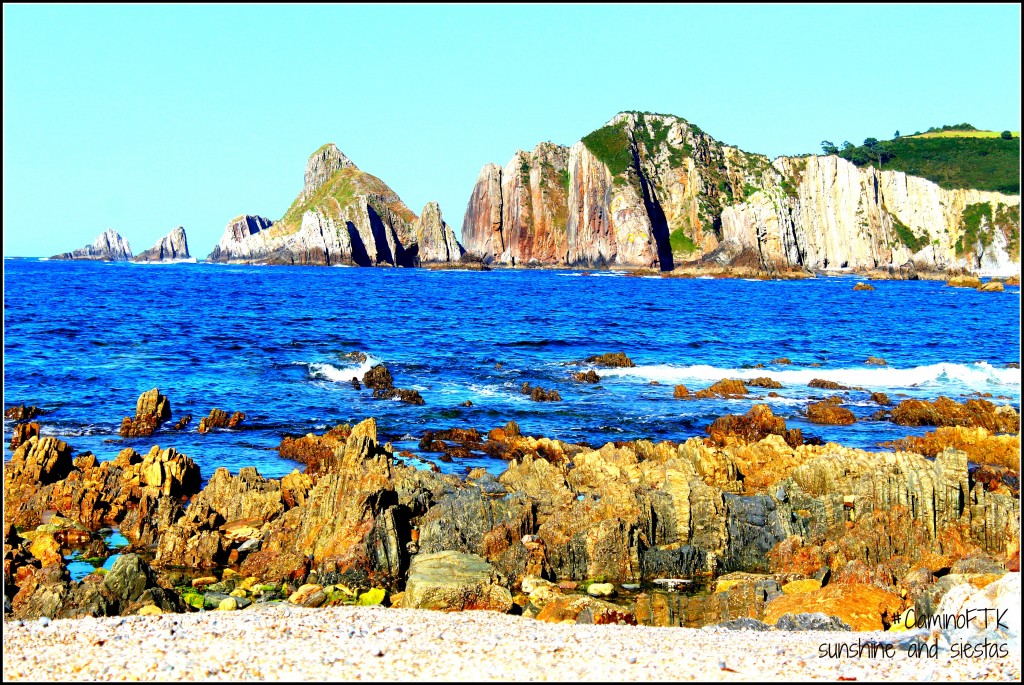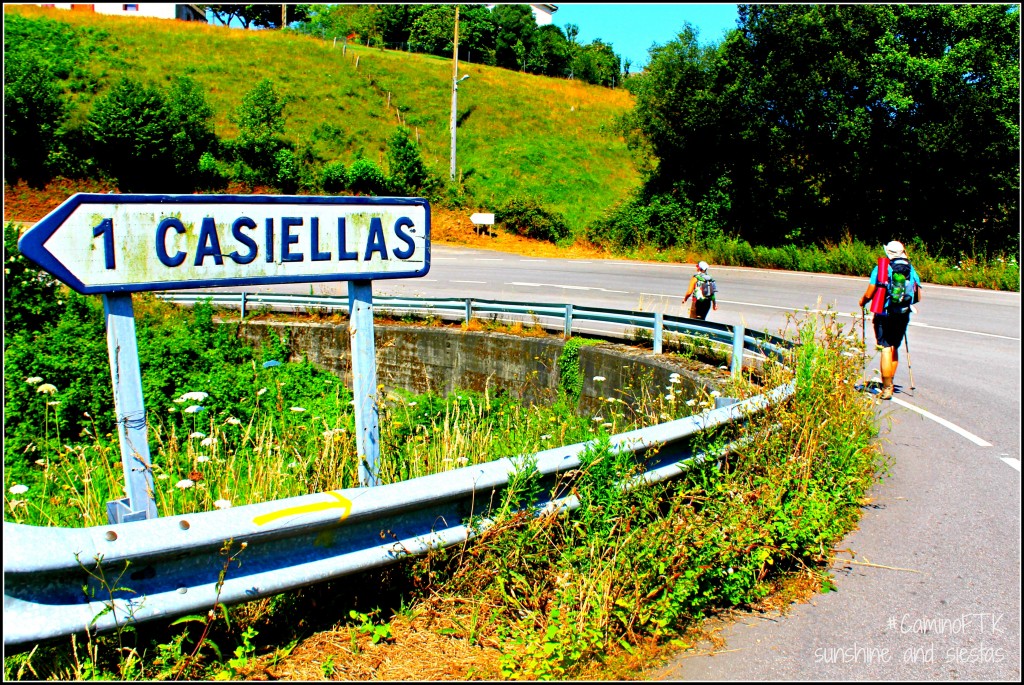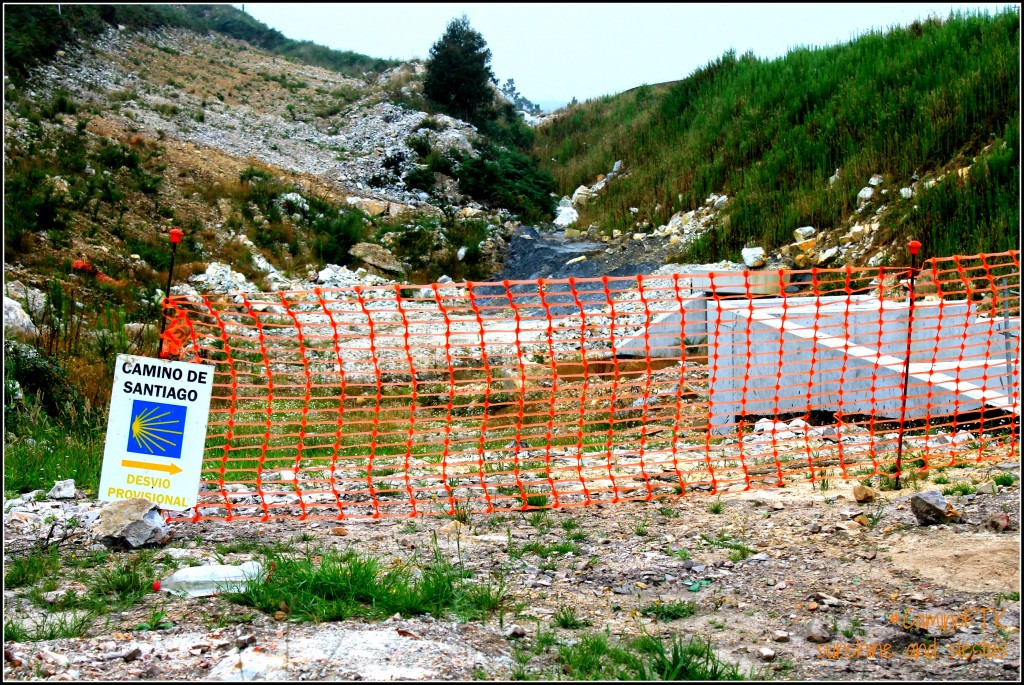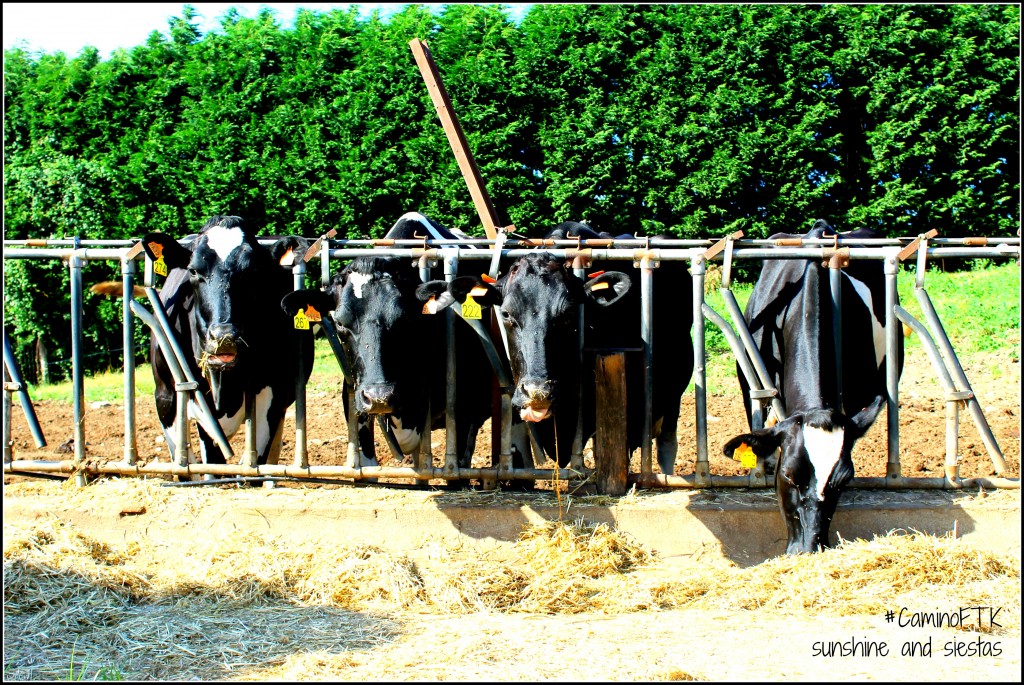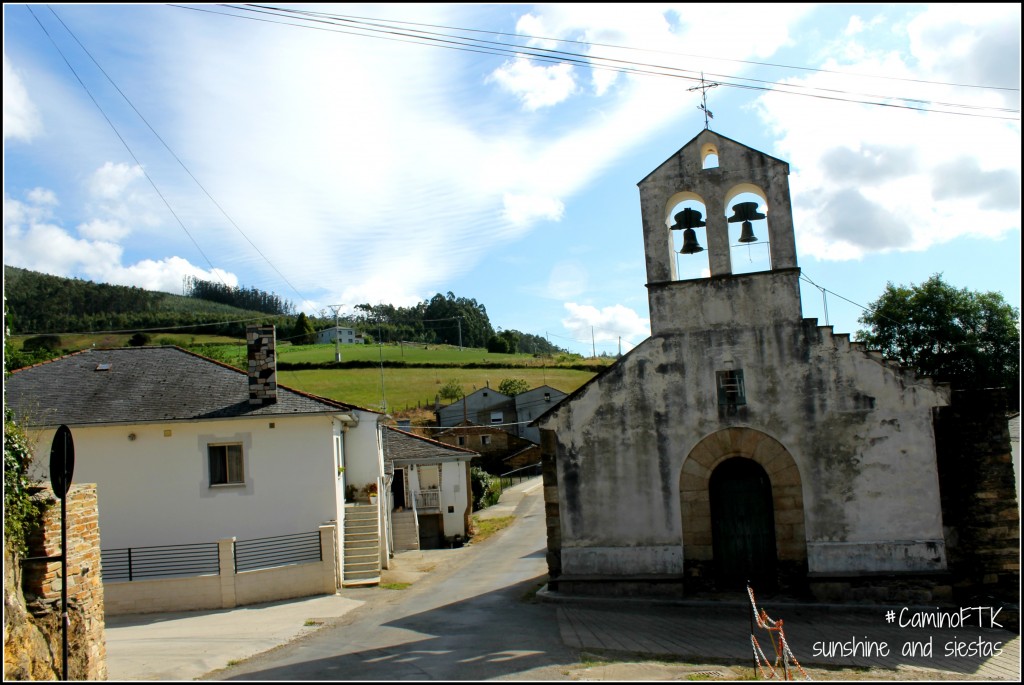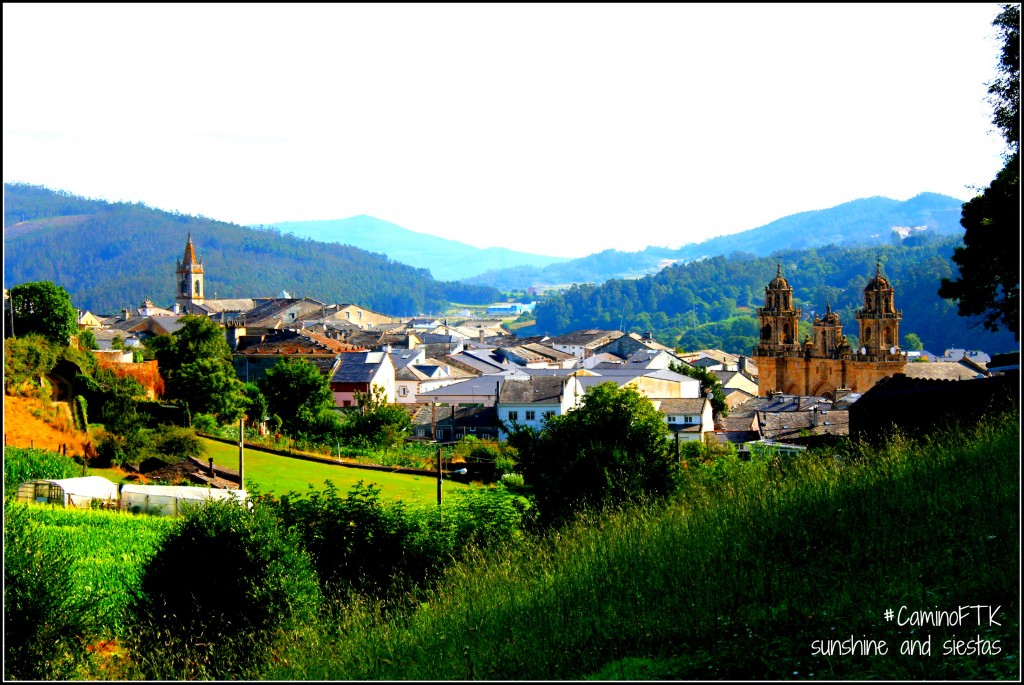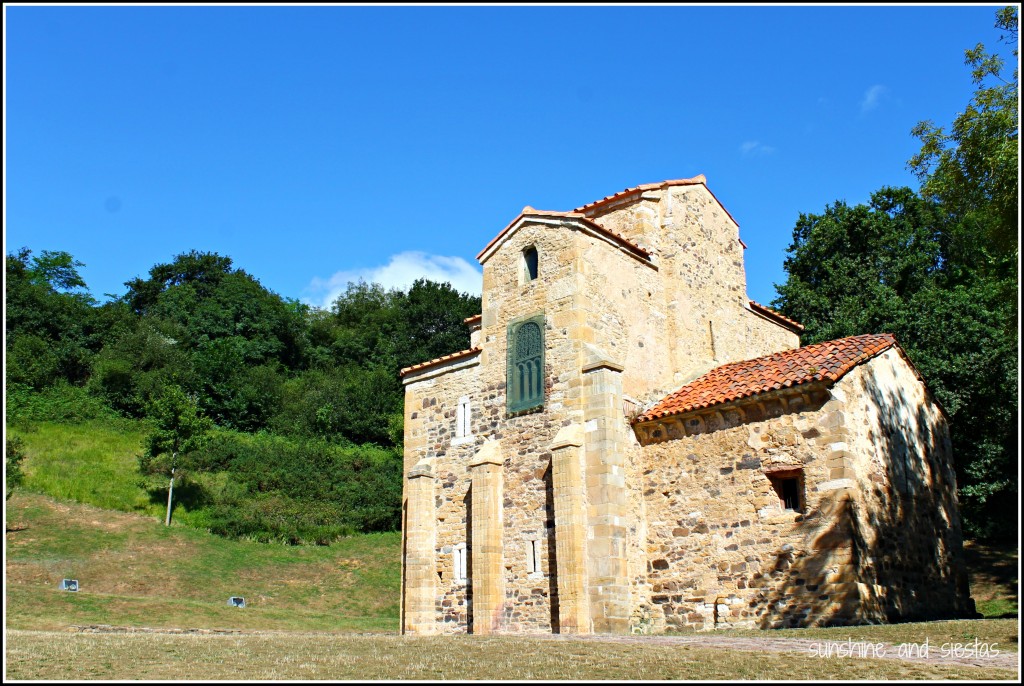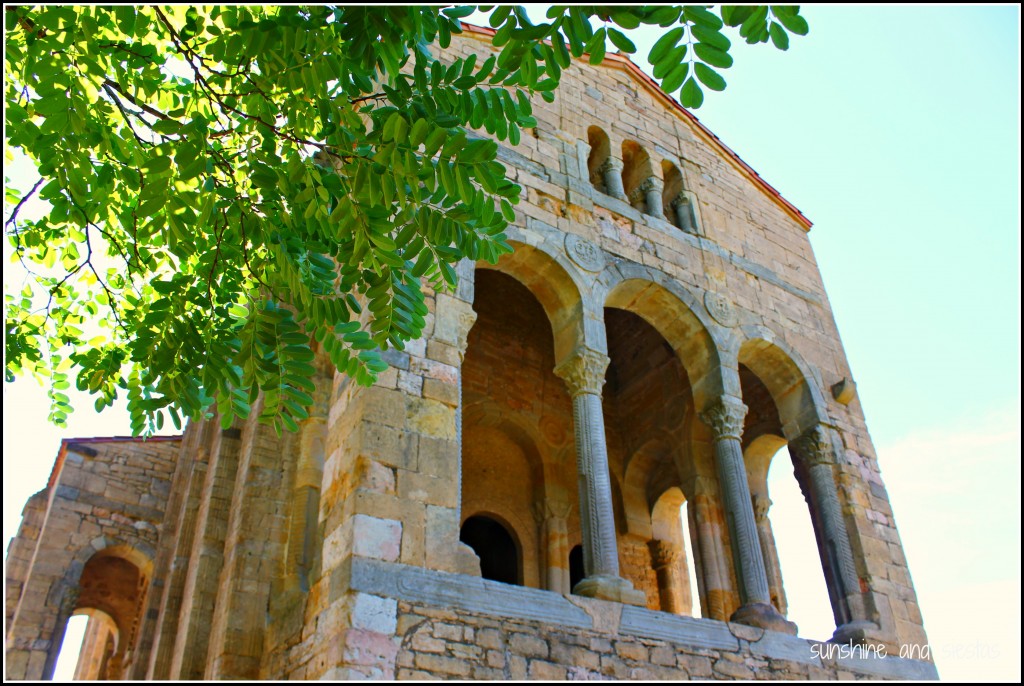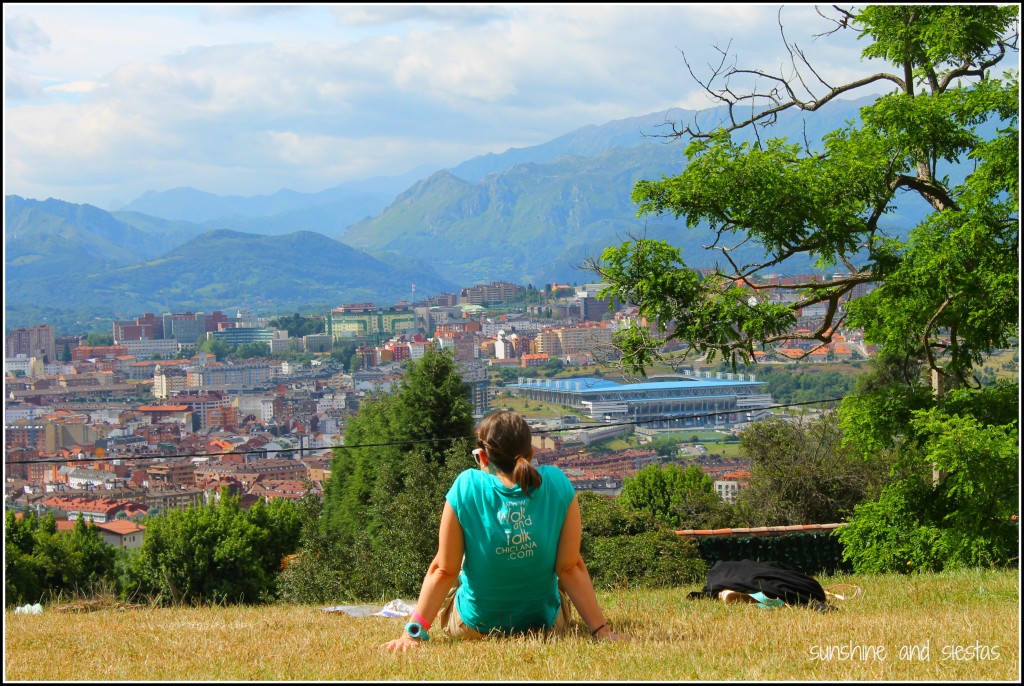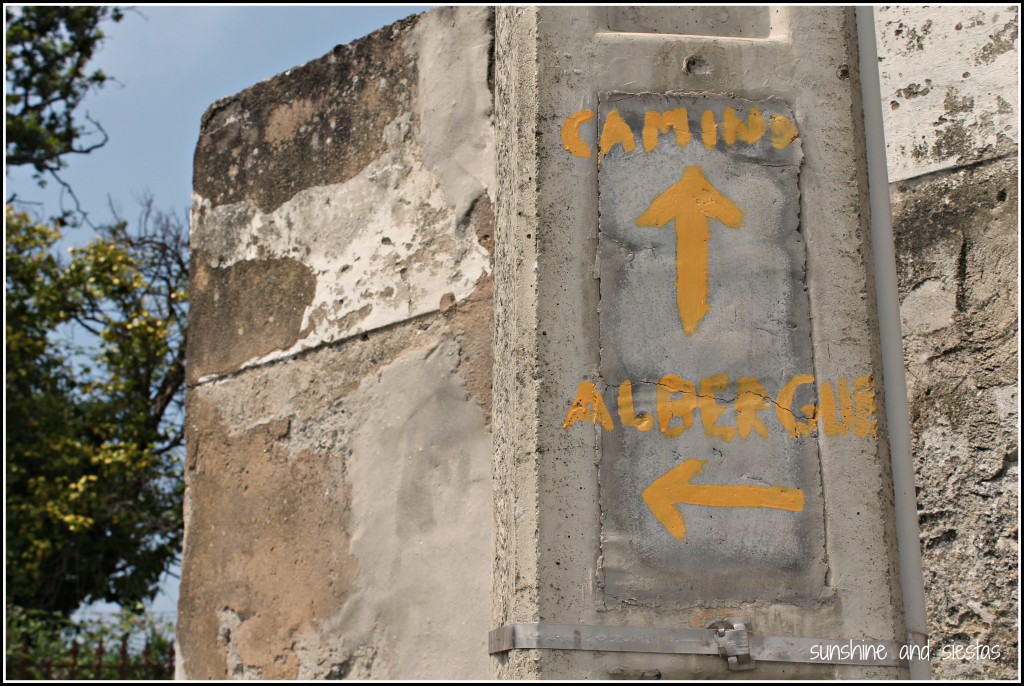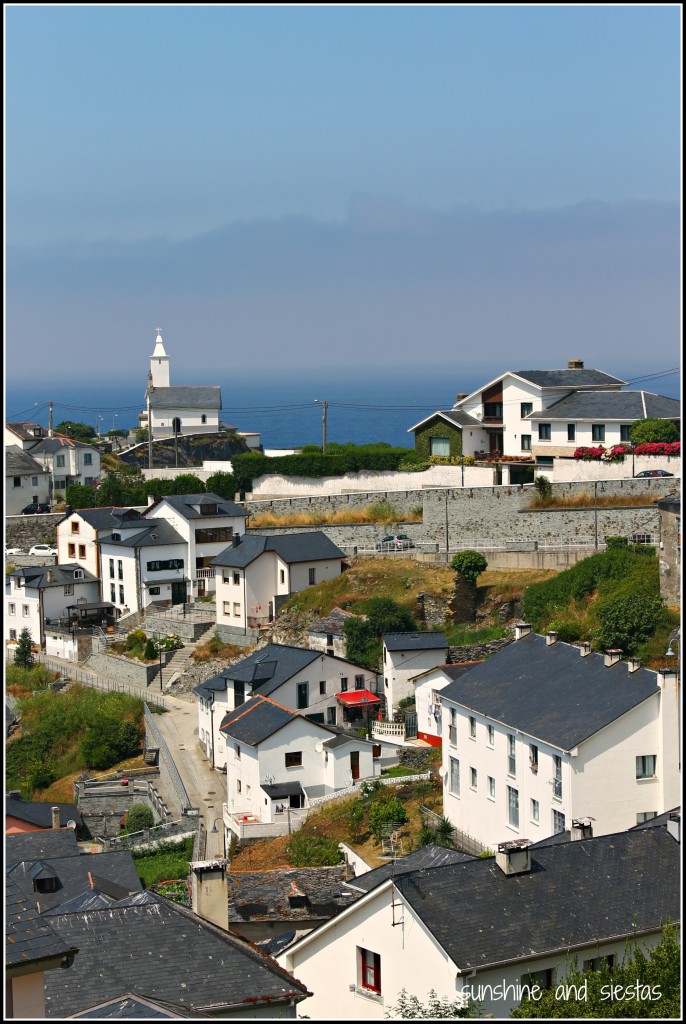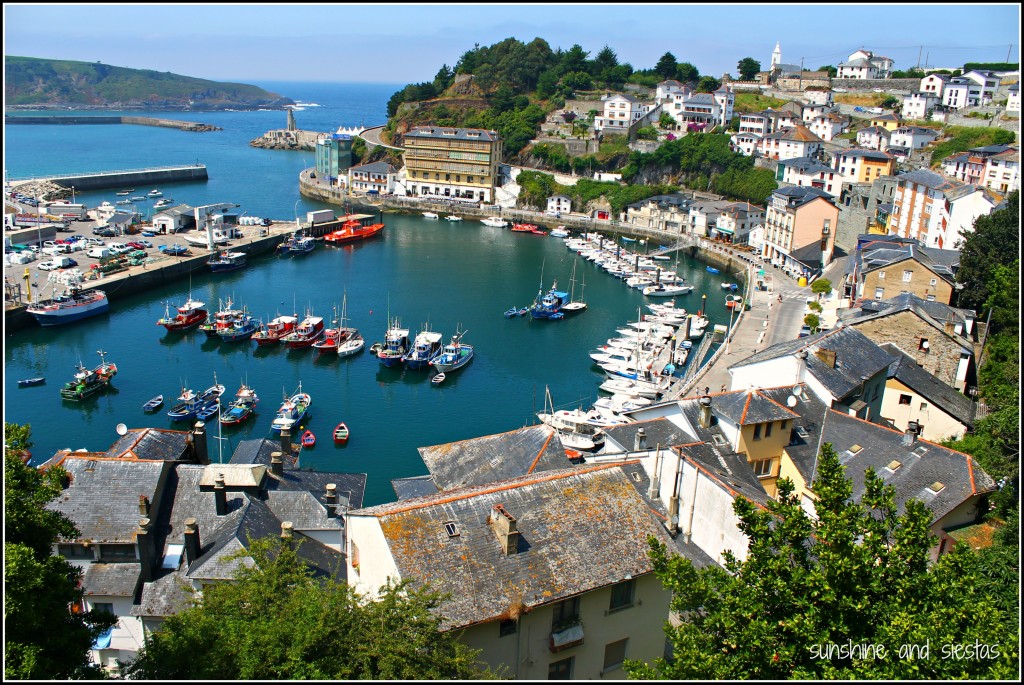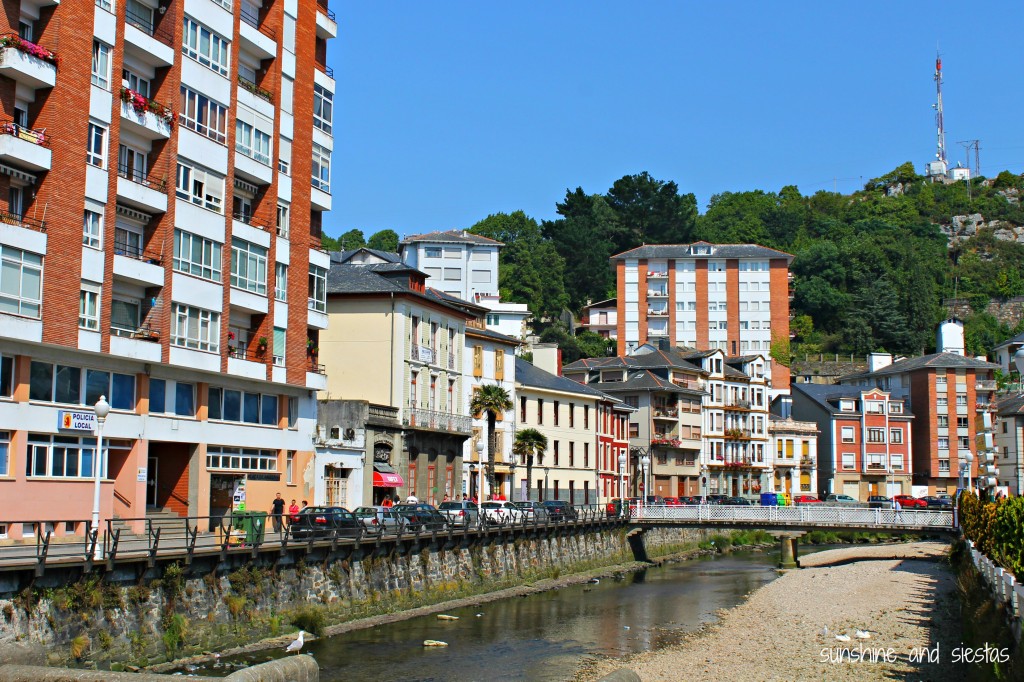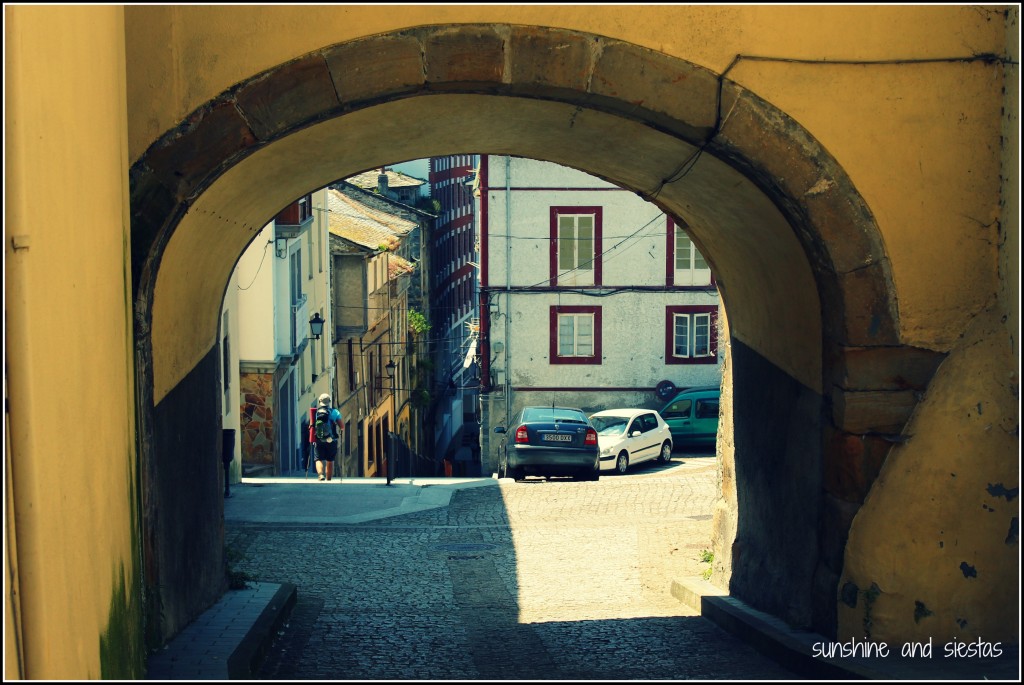The Camino is full of little moments – a beautiful medieval bridge, a small roadside shrine, a memorable meal shared with other pilgrims. In the 14 days it took us to walk from Avilés to Santiago de Compostela, we saw all of the things I love about Spain. Much as I wanted to capture it all in my journal or with my camera, there was simply no time. For once, I was living in the moment and learning about myself and about life.
But really, I would have ‘sooner broken my neck’ than leave my camera behind.
In all, I took 25MB of photos and videos. I wanted to remember EVERYTHING – what our meals consisted of, the people we met and their faces, the names of every small hamlet we passed through. We saw breathtaking beaches, the lush rolling landscapes of Northern Spain, hundreds of farm animals and stone crucifixes.
The pictures that follow all have stories, or they were simply a part of pilgrim life – simple living at its best. I could write an entire blog about our daily experiences on the trail, but it would be much of the same: We walked. We stopped for a coffee. We walked more. I got a new blister. We kept walking…
These 14 pictures go beyond the big moments that we experienced – they’re all the little things that went into our shared experience.
Day One // Monday, July 29th, 2013 // Avilés – El Pito // 26.5km
I easily shot the most on this day – everything was so new, every way marker a bit different from the last, the landscapes so dramatic as the cliffs of Asturias dropped into the sea. The weather was perfect and my body felt strong and able. We got lost early on in the day, stopped for beer just because and even splurged on a gorgeous guest house with the most comfortable beds ever.
What has really stuck with me, though, was our afternoon stop in Cudillero, a quaint fishing village built on a hidden inlet. Foolishly thinking there was a beach, Iván and I waded in the shallow bay, letting the cool water ease the pain in our feet. I watched the local kids splash around and look for hermit crabs between the moss-covered rocks.
I remember feeling extremely happy, between the kids and the water and the bottle of cider that followed. The journey had only just begun, and I couldn’t wait to wake up the next day and set out again.
Day Two // Tuesday, July 30th, 2013 // El Pito – Santa Marina // 21.1km
Ouch. We began the day with a tough climb to Soto de Luiña, and I was relieved that we didn’t do those last 10 kilometers the day before. The trail led us back and forth between the beach and the rolling hills straight off of a bottle of Leche Asturiana as we passed through beautiful Soto and hugged the N-634 highway into Santa Marina, where we’d spend the night.
After a painful hike down a steep hill and about 100 stairs, we arrived at a beach that looked straight out of Jurassic Park – rock crags shot up from the water, creating small pools full of water when the tide came in. It was windy, chilly and rocky, but considering I am like a seven-year-old boy when it comes to prehistoric lizards and Asturias was once Dinotown in Spain, I was psyched.
But that hike up the hill again definitely deserved a super enormous dinner, one of the best we had along the trail.
Day Three // Wednesday, July 31st, 2013 // Santa Marina – Luarca //27 km
I had a terrible night’s sleep, but was psyched to get to Luarca, considered one of Spain’s most beautiful villages. It was a day with a lot of highway walking and a constant threat of rain, and we got to Luarca absolutely exhausted and later than normal. I also got my first two blisters long before arriving, though we did get fabada and a kick-ass salad. Not all was lost.
Day Four // Thursday, August 1st, 2013 // Luarca – A Caridá // 31km
This was the longest, absolute longest day ever, and also the ugliest. Every time we’d ask how far off A Caridá was, we’d get the same ‘Just about a kilometer’ answer from nearly everyone, when, in fact, we were much further. We ran into road construction, never-ending hills and detours. I honestly thought my feet were going to fall off by the time we got to Navia for a snack, and there were still 10 kilometers still to go (there was, however, a puppy halfway through).
We got several laughs by the time we’d had a beer midmorning and were so tired that everything was laughable – a deranged old lady who hassled Hayley, a cow who mooed at me while I relieved myself in the middle of a field, two more who got it on as we walked by (that was for real the funniest thing ever). I also sat on an ortiga, causing an itchy rash.
It was also here that we finally stayed in a shiny new albergue, grabbing the last three beds before the place filled up (which would have meant backtracking three kilometers to the old albergue). The hospitalero was amazing – he opened up his restaurant for us, gave us second helpings and bought us a drink later in the evening. When they say that people protect pilgrims and do what they can to make the Camino easier, they’re right.
Day Five // Friday, August 2nd, 2013 // A Caridá – Ribadeo // 21.5km
After seven days between Oviedo and Figueras, we left Asturias, arriving to Ribadeo early enough to enjoy a long lunch, a long siesta and a visit to Trip Advisor’s top-rated beach, Playa As Catedrais. It was a quick day walking, to be honest, knowing we’d be racing the others to get to a bed in the teeny albergue in Ribadeo. Santiago seemed closer than ever as we crossed into the region of Galicia. All at once, the way markers changed direction and we walked with more purpose.
Ribadeo reminded me a lot of Cádiz or El Ferrol – you could tell that, if taken care of, the city could really shine. It was the perfect introduction to Lugo.
I also remember falling on this day in Porcia as we crossed a medieval bridge. My knee began giving me problems, and I’d eventually cave and go to a pharmacy for a knee brace. The pharmacy was located next to a store called ‘Todo para Abuelos,’ and we had to laugh at the irony.
Day Six // Saturday, August 3rd, 2013 // Ribadeo – Lourenzá // 27.5km
While in Ribadeo, Hayley and I realized we needed a breather from our other peregrino friends – we just wanted a bit of solitude. On the sixth day, we did a long hike through rolling meadows, passing towns with nary a supermarket or bar, just a small collection of houses and an occassional church. Villagers raised their arms to wave and mutter a ‘Buen Camino!’ and everything (including watching a huge caterpillar get pummeled by a car) seemed hilarious.
For the first and only time on the hike, we stopped for lunch before reaching our finishing point. After ordering a large beer, the woman at the bar informed us that she only had potato chips and old pastries to offer us. I was a bit crestfallen, as we hadn’t packed many snacks that day, but the bar next door didn’t disappoint – an enormous fuente of lentejas, a bottle of strong red and the laughter of the other pilgrims who had also stopped for fuel.
We spent the last 10 kilometers belting out John Denver songs. Rocky Mountain high….yes.
There was just one bed at the inn and no shower door in Lourenzá, so we decided to splurge on a private room. Just 10€ for a bedroom, hot shower, laundry facilities and a kitchen where we’d meet Valèrie and Guido, the adorable French couple who moved faster than we did.
Day Seven // Sunday, August 4th, 2013 // Lourenzá – Gontán // 24km
My first step out of bed was fine, but the second caused a weird crack in my knee. It was still dark and I fumbled for the bottle of aspirin I’d left nearby in my plastic bag filled with drugs, earplugs, needles and band aids. It was going to be a long day.
The trail wasn’t so long, but after a quick nine kilometers downhill into Mondoñedo, we had to literally climb a mountain. As we zigzagged into one of Galicia’s ancient kingdoms, I told Hayley that I was considering taking a bus or taxi to Gontán. She nodded her head in agreement, though I knew she wouldn’t be joining me. I even got tendonitis as we neared closer to our breakfast spot, an aptly named Bar Peregrino.
After a strong coffee and an enormous breakfast, my optimism came back, and I was willing to push through the pain. As we left Mondoñedo and its breathtaking valley and continued the climb up, I was happy that I decided to forgo a free ride and stick to my plan to walk the entire way to Santiago.
Halfway up the mountain, which was a climb of eight kilometers, Santine and Claude were stopped, talking to a woman on a rickety chair dressed entirely in black. Two small boys rode bicycles in the small hamlet behind her. She pointed to a cemetery down the rode with a dozen headstones. ‘They’ve all left. I’m all there is,’ she lamented.
Reaching Lousada meant we were nearly to the top of the mountain, and even then there was another hour of walking. We tried to animarnos with a bit of cheese and chocolate, and I’m pretty sure we both cried that day of physical pain and exhaustion. The inn was once again full, meaning walking to the next town, Abadín, and paying for a hotel room.
…to be continued.
Want more? My flickr page has every photo you could ever want to see, and I’m working on my first video! In the meantime, you can watch Hayley’s Camino video and tear up when I do when arriving to the Obradoiro (or laugh at how excited I get about a plate of lentejas)! To learn more about the Camino de Santiago, check out my resources page, or get your FAQs answered by Trevor of A Texan in Spain.
